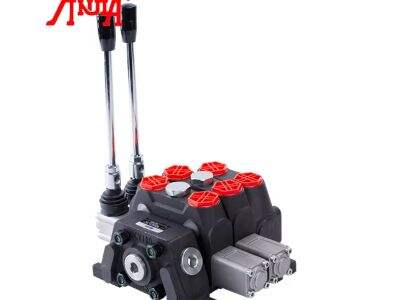شیرهای کنترل جریان، اجزای حیاتی در بسیاری از سیستمهای هیدرولیکی هستند. آنها دبی روغن هیدرولیکی را کنترل میکنند که این امر اطمینان از عملکرد صحیح سیستم را فراهم میکند. در این مقاله به این موضوعات پرداخته خواهد شد که چرا شیرهای کنترل جریان ضروری هستند، چگونه آنها را برای عملکرد بهینه تنظیم کنیم، مشکلات متداولی که ممکن است با آن مواجه شوید و ترفندهایی برای کارکرد پایدارتر آنها در سیستم هیدرولیکی شما.
شیرهای کنترل جریان در فرآیندهای هیدرولیکی چقدر مفید هستند
شیرهای کنترل جریان برای سیستم شما مثل مجموعهای از چراغهای راهنمایی در یک شهر هستند. آنها کنترل میکنند که چه مقدار از روغن هیدرولیک (ترافیک) به قسمتهای مختلف سیستم هیدرولیک هدایت شود. با تنظیم شیرهای کنترل جریان، میتوانید سرعت عملکرد دستگاههای هیدرولیک خود را کنترل کنید. این موضوع اهمیت دارد زیرا قسمتهای مختلف نیازمند سرعتهای متفاوتی هستند تا دستگاه بتواند کار خود را به درستی انجام دهد.
تنظیم شیرهای کنترل جریان برای دستیابی به حداکثر بهرهوری
تنظیم شیرهای کنترل جریان ممکن است کمی پیچیده به نظر برسد، اما با داشتن ابزارهای مناسب و رعایت چند راهنمایی ساده، لزوماً به اندازهای که فکر میکنید دشوار نیست. مراحل ساده زیر را دنبال کنید تا ببینید چگونه میتوانید شیرهای کنترل جریان سیستم هیدرولیک خود را تنظیم کنید:
پیدا کردن شیر کنترل جریان: ابتدا محل شیر کنترل جریان در سیستم هیدرولیک خود را پیدا کنید. این شیر معمولاً در نزدیکی پمپ هیدرولیک یا عملگر قرار دارد.
نحوه تغییر آن: شما میتوانید شیر کنترل جریان را به روشهای مختلفی تنظیم کنید، مانند استفاده از دستهها، پیچها یا اهرمها. ممکن است برای تنظیم شیر خود به یک ابزار نیاز داشته باشید، بسته به نوع آن.
۱) چرخاندن ابزار تنظیم: برای افزایش سرعت جریان، ابزار تنظیم را بچرخانید. پیچاندن آن در جهت عقربههای ساعت معمولاً آن را کند میکند؛ در خلاف جهت عقربههای ساعت، سریعتر میکند.
سرعت را بررسی کنید: پس از تنظیم، مطمئن شوید که تجهیزات هیدرولیک با سرعت صحیح کار میکنند. در صورت لزوم بیشتر تنظیم کنید.
مشکلات متداول شیر کنترل جریان و نحوه رفع آنها
از طرف دیگر، شیرهای کنترل جریان برای سیستمهای هیدرولیک ضروری هستند، اما گاهی ممکن است دچار خرابی شوند. در اینجا فهرستی از مشکلات رایج و روشهای حل آنها آورده شده است:
نشت: اگر مایعی در حال نشت است، روی کلید کنترل جریان , برای آسیب دیدگی در واشرها و اتصالات بررسی کنید. قطعات آسیب دیده را تعویض کنید تا نشت متوقف شود.
پاسخ معکوس (کُندی): اگر پاسخ کُند باشد، شیر کنترل جریان ممکن است گرفتگی داشته باشد یا خراب باشد. شیر را تمیز کنید و آن را تنظیم کنید تا عملکرد بهتری داشته باشد.
جریان ناهموار: اگر متوجه شدید که جریان نامنظم است، ممکن است نشانهای از مشکل در شیر بررسی (چک والو) یا وجود حباب هوا در مایع باشد. هوا را از سیستم خارج کنید و شیر مربوطه را بررسی کنید.
تنظیم دقیق شیرهای کنترل جریان - نکات و ترفندها
تنظیم شیرهای کنترل جریان برای عملکرد بهینهتر سیستم هیدرولیکی شما. چند نکته مهم:
از دستگاههای اندازهگیری استفاده کنید: دستگاههای اندازهگیری فشار و جریان به شما کمک میکنند تا میزان جریان و فشار سیستم را پایش کنید. در هنگام تنظیم شیرها، دادههای آنها را دنبال کنید.
آلریدی مینویسد که میخواهد به نکته زیر تأکید کند: دستورالعملهای سازنده را دنبال کنید: شیرهای مختلف دارای دستورالعملهای متفاوتی برای ریست کردن هستند. همیشه به منظور اطمینان خاطر به دستورالعملها مراجعه کنید.
سیستم خود را نگهداری کنید: نگهداری عمومی از سیستم هیدرولیکی خود را ادامه دهید و مراقبت کنید و دقت کنید و تنظیمات خود را کالیبره کنید مقدارده کنترل جریان هیدرولیک . این امر از بروز مشکلات جلوگیری میکند و عمر تجهیزات شما را افزایش میدهد.
استفاده بهینه از سیستم هیدرولیکی شما
با تنظیم صحیح شیرهای کنترل جریان، میتوانید عملکرد بهتری از سیستم هیدرولیک خود به دست آورید، همچنین دستگاههای شما بدون وقفه کار خواهند کرد. توجه داشته باشید که راهنمای تنظیم، رفع مشکلات رایج و نکات مربوط به تنظیم دقیق میتواند به شما در رسیدن به نتایج بهتر کمک کند. سیستم هیدرولیک شما با تنظیم مناسب و توجه لازم به گونهای عمل خواهد کرد انگار که ماشینی است که به خوبی روغنکاری شده است، شیرهای جریان دارند.

 EN
EN
 AR
AR BG
BG CS
CS DA
DA NL
NL FI
FI FR
FR DE
DE HI
HI IT
IT JA
JA KO
KO PL
PL PT
PT RU
RU ES
ES SV
SV TL
TL IW
IW ID
ID SR
SR SK
SK SL
SL UK
UK VI
VI GL
GL MT
MT TH
TH TR
TR FA
FA AF
AF MS
MS GA
GA HY
HY EU
EU LA
LA MI
MI NE
NE MY
MY